Hi teacher! Getting ready to start a new lesson or unit? Want to pique students’ interest in the topic and get them thinking critically? If so, anticipation guides can be a great way to kick-off learning and build background knowledge! If you’re not familiar with them yet, sometimes seeing an example of anticipation guide use in the classroom can be helpful.
So stay tuned! I’m here with all the tips for using anticipation guides at the start of any lesson!
What is an Anticipation Guide?
An anticipation guide is a chart that will introduce a new topic to students in an engaging way. It’s important to introduce the anticipation guide at the beginning of your new unit or lesson. You’ll start with a basic template. Most include three basic elements:
1. A column on the left for statements pre-written by the teacher.
The statements should be related to the content in the upcoming lesson/unit. Additionally, they should be thought-provoking. Students will be asked to mark if they agree or disagree, so good statements to include are those that may evoke a variety of responses. The responses will be based on students’ prior knowledge, opinion, or assumptions about the topic.
Example of anticipation guide statement for a unit on weather:
Hurricanes can form over oceans that are cold or warm.
Example for a unit on geometry:
An angle that is greater than 90 degrees is called an acute angle.
Example for a unit on the discovery of the Americas:
Christopher Columbus was the very first explorer to come to North America.
2. A column where students indicate whether they agree or disagree with the statement.
This encourages activation of prior knowledge, piques students’ interest in the topic, and sparks critical thinking. Of course, you should encourage students to be authentic in choosing their response. They shouldn’t worry if it’s “right or wrong” or different from their peers.
3. A column for students to complete AFTER learning, as they revisit the anticipation guide.
They will again mark if they agree or disagree with each statement, now having fresh understandings and/or opinions of the subject matter. Also, this is a wonderful self-assessment and reflection activity for students.
In addition to these basic elements, you have the option of including a column for students to explain their thinking (i.e. “I’ll tell you why!” or “Maybe, if…”), or to provide evidence to support their thinking. You could expand this element to include recording responses as audio files or on Flipgrid. Or you could have students indicate a page number of a text that lends support to their thinking.
Encouraging Academic Discourse
And now…my favorite part of using anticipation guides! They’re great for sparking classroom conversation and encouraging academic discourse! Use the anticipation guides to prompt small groups of students to share and discuss their chosen responses.
Giving some lesson time to this activity will:
- increase opportunities to practice and use new content vocabulary
- guide interaction, questioning, and reasoning
- give students authentic opportunities to practice oral persuasion and defense of their conclusions
- allow English learners some time to build background knowledge before learning
- give the lesson a greater sense of context and purpose
To help you out, below is a page from an anticipation guide resource I created. (More info at the end of this post!)
This offers some sentence starters to prompt student discussion:
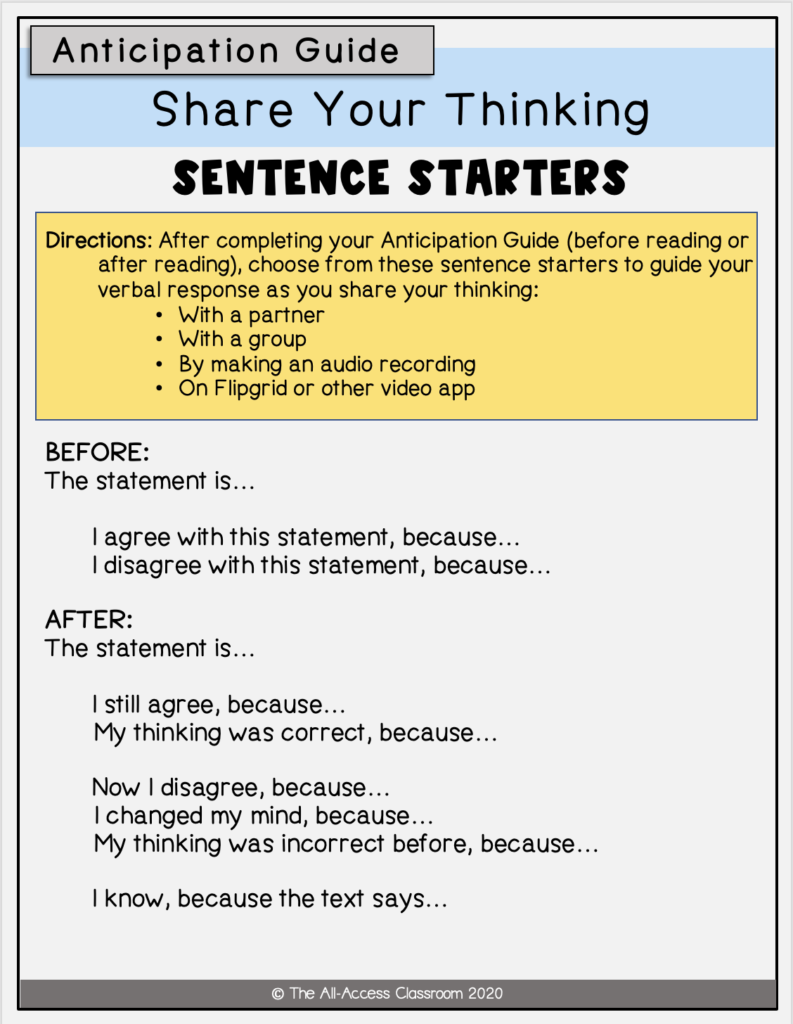
Anticipation Guide Examples
To clarify what this might look like in the classroom, here are some images of anticipation guide examples. I believe it’s possible to design an anticipation guide to accompany any subject matter. All it takes is a little thought about what would make for intriguing statements to include. You could assign a digital version, or print for students.
Anticipation Guide Template
Finally, if you’re itching to try this strategy in your classroom, but need an anticipation guide template to start with, I’m here for ya! I’ve created a set of multiple variations, and made them digital and printable. Also, to support English learners, I also included audio read aloud features, so that students understand the directions and cues.
For more learning about anticipation guides, check out these resources:
https://www.readingrockets.org/strategies/anticipation_guide
http://www.theteachertoolkit.com/index.php/tool/anticipation-guide
And for more about activating students’ prior knowledge:
My blog post on Activating Students’ Prior Knowledge
Digital Resources for Building Background Knowledge
So those are some ideas for you…hopefully this helped you get some fresh ideas you can use in your All-Access Classroom. 🙂 I can’t wait to see what awesome anticipation guides you create! Find me on Instagram @TheAllAccessClassroom and shoot me a photo of yours! I’d love to see!
Always here for you,
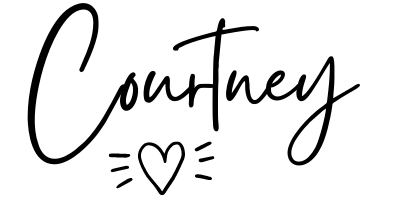

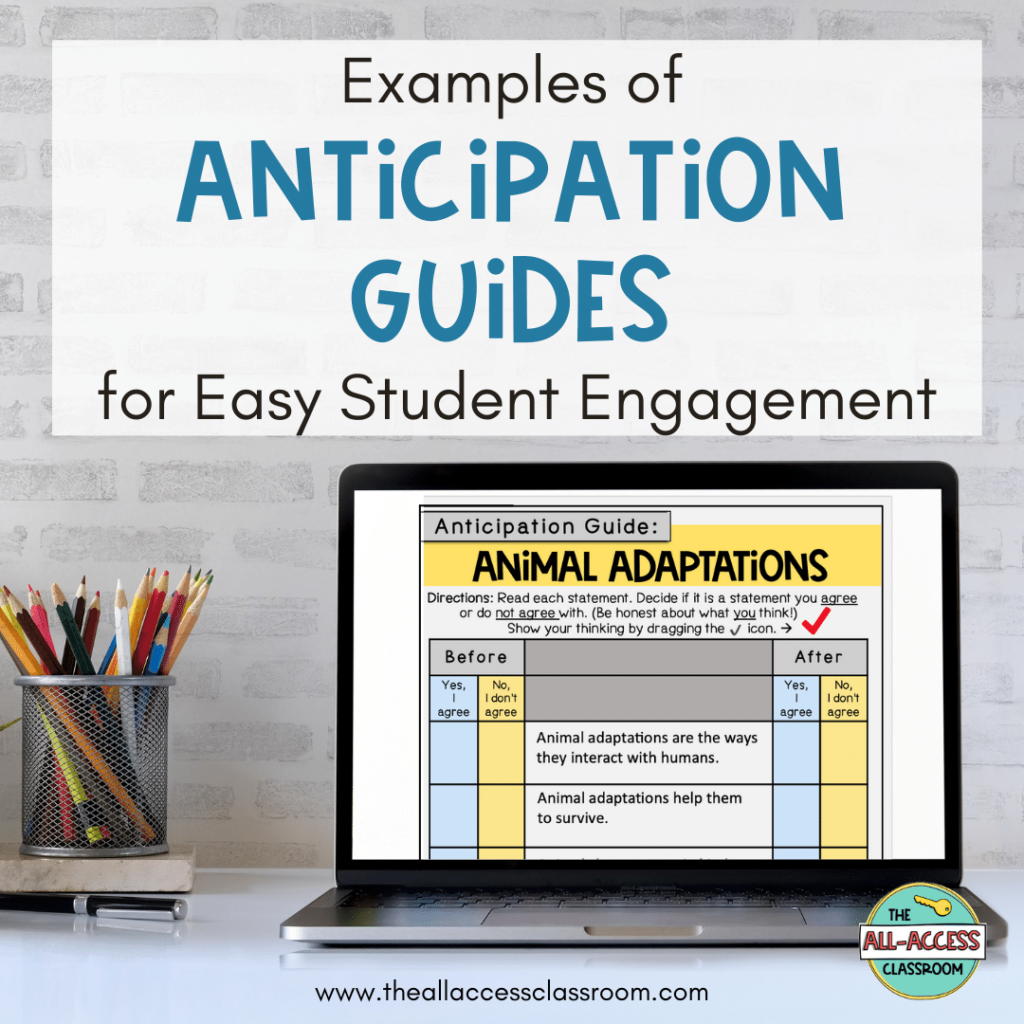
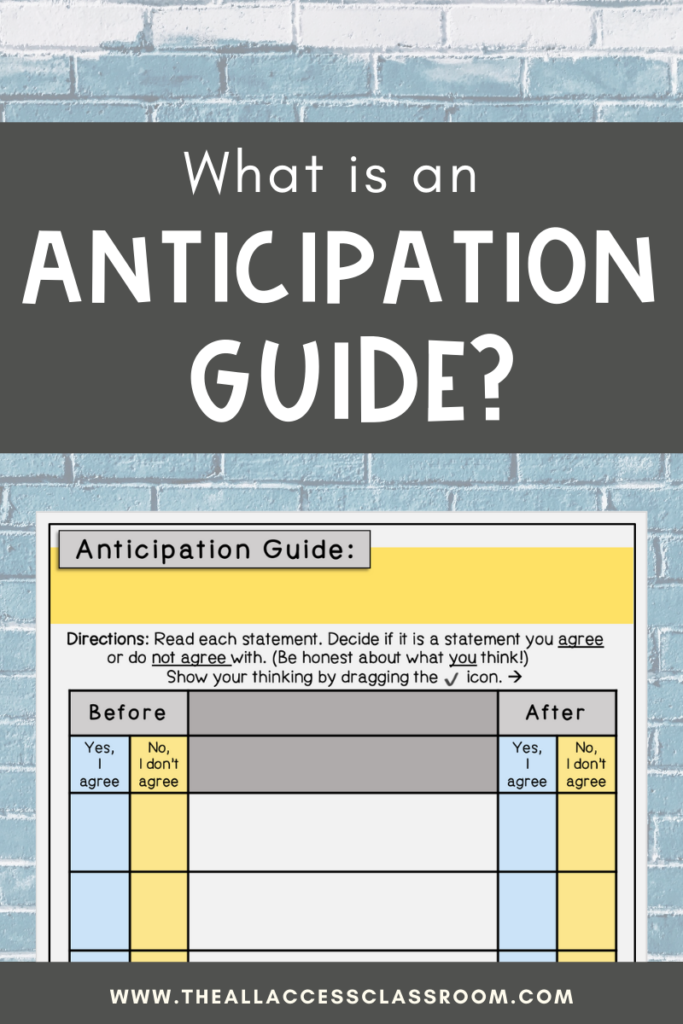
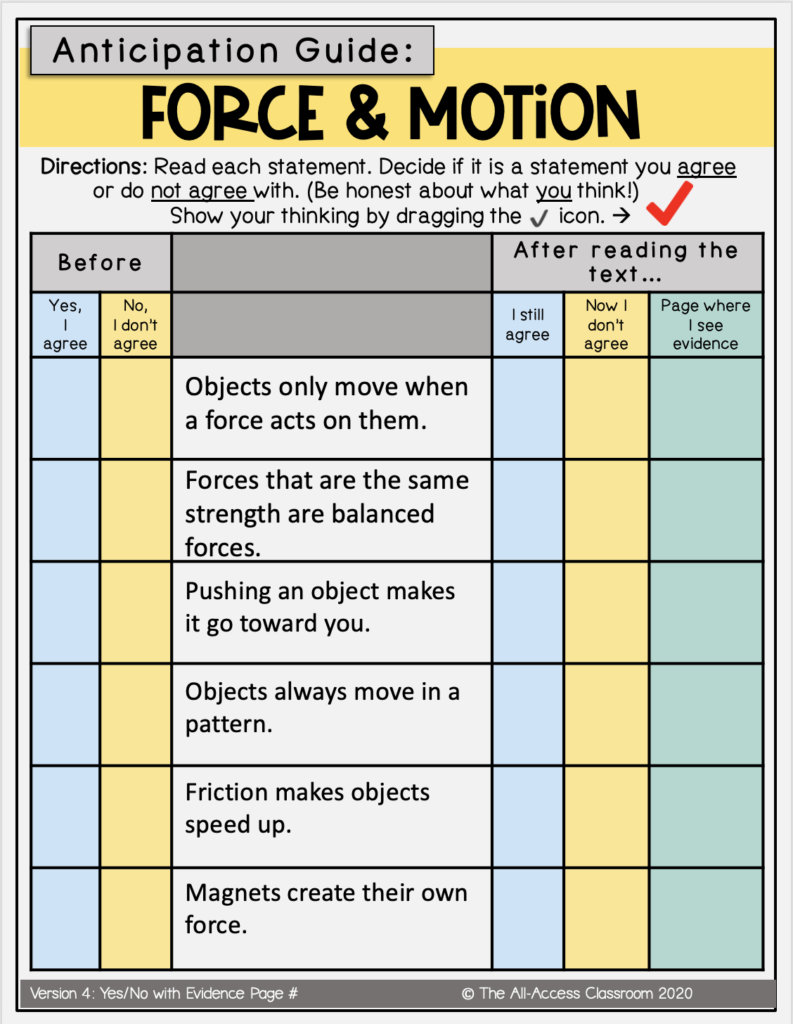
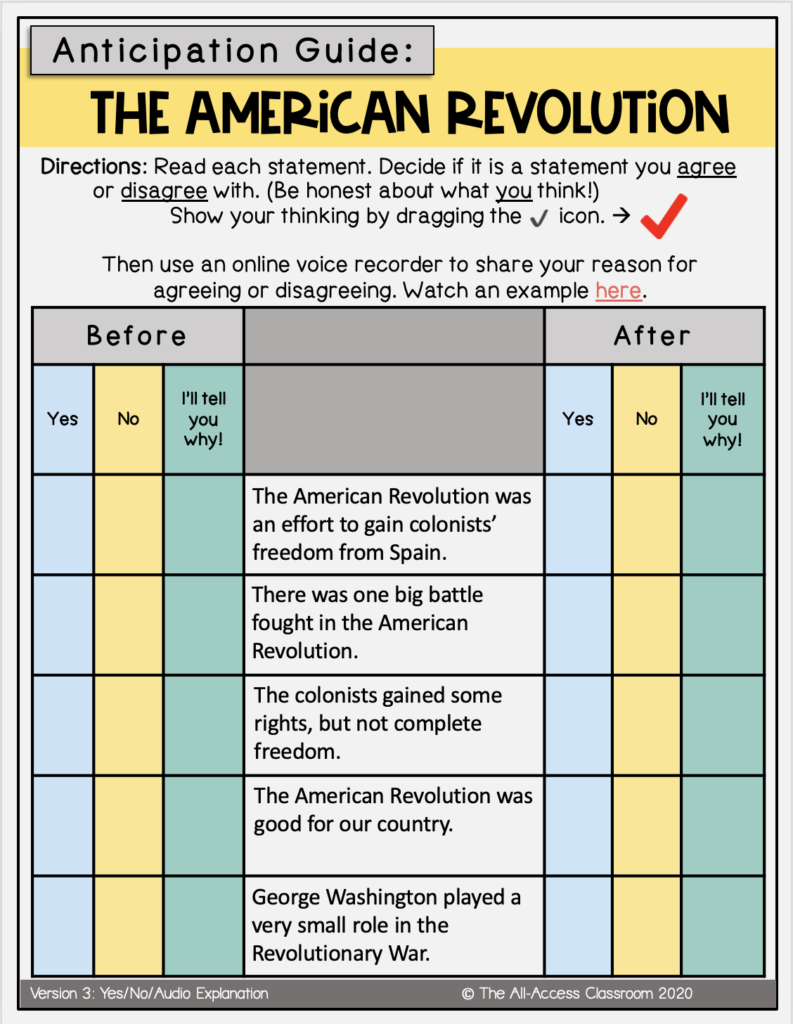
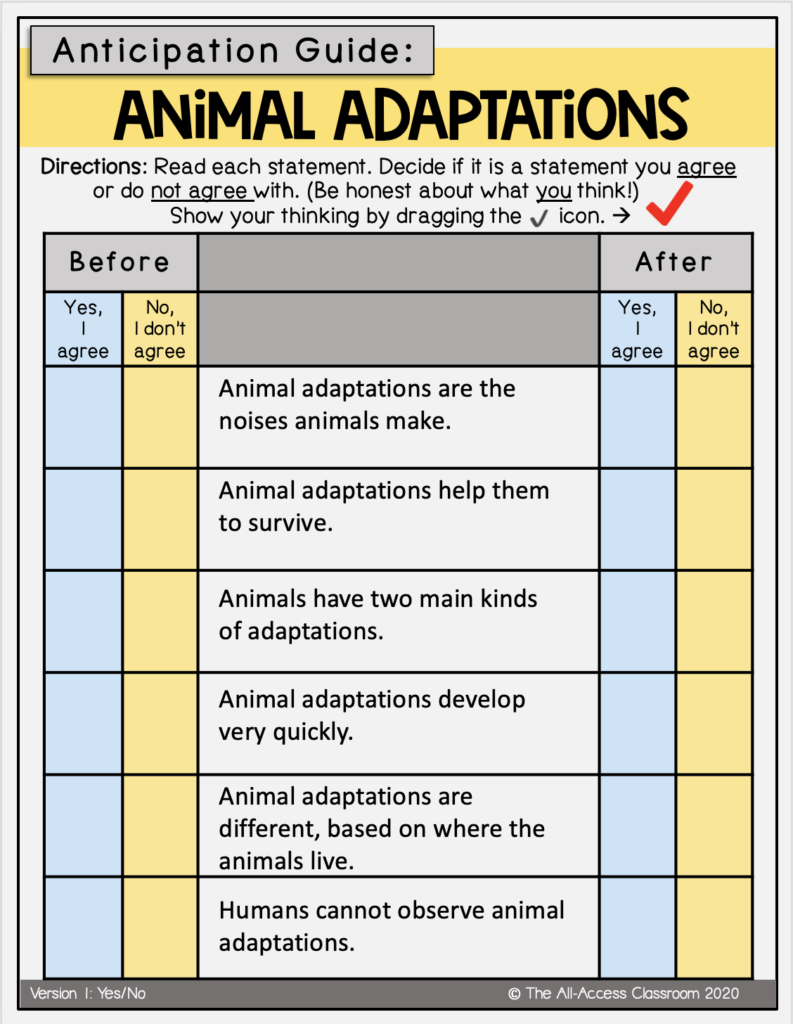
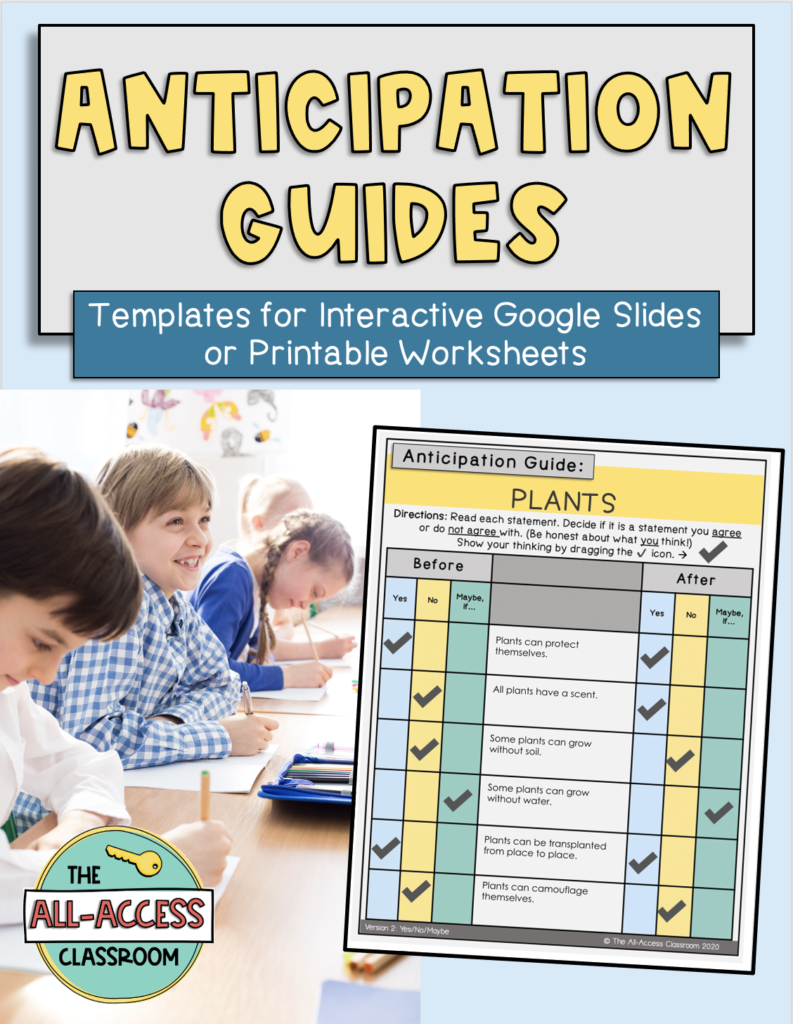
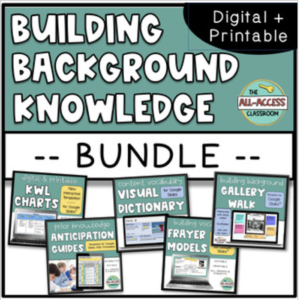

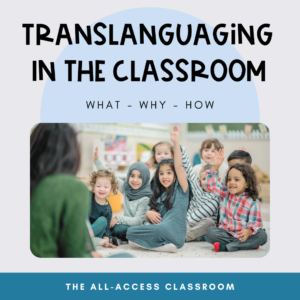


One Response